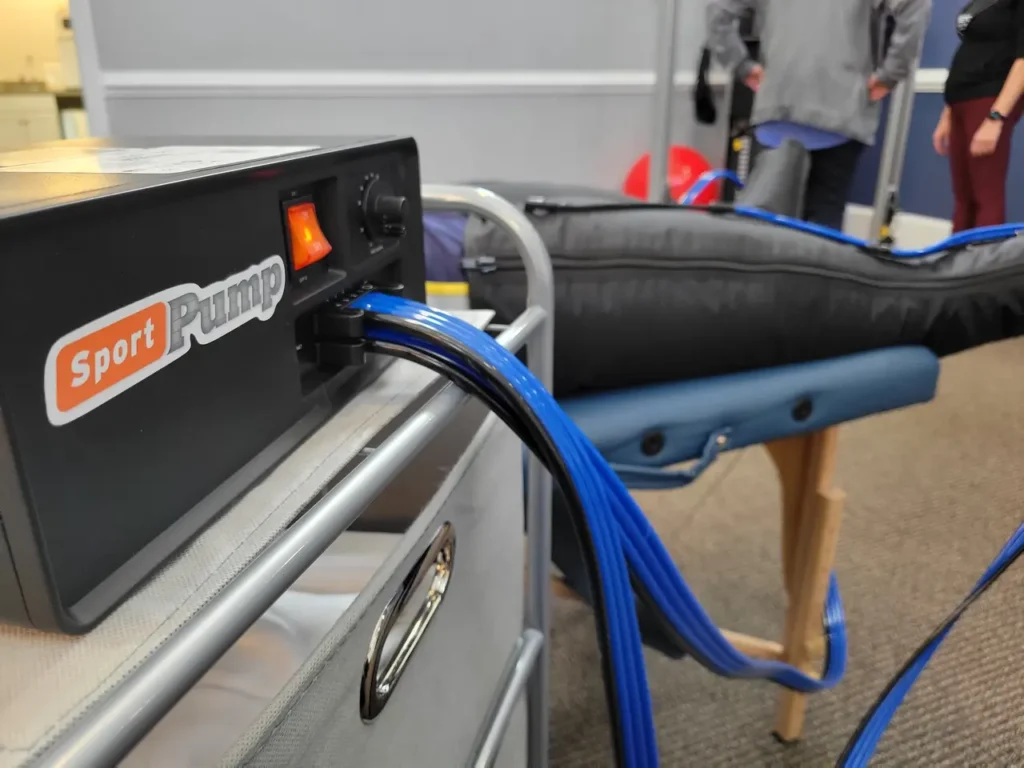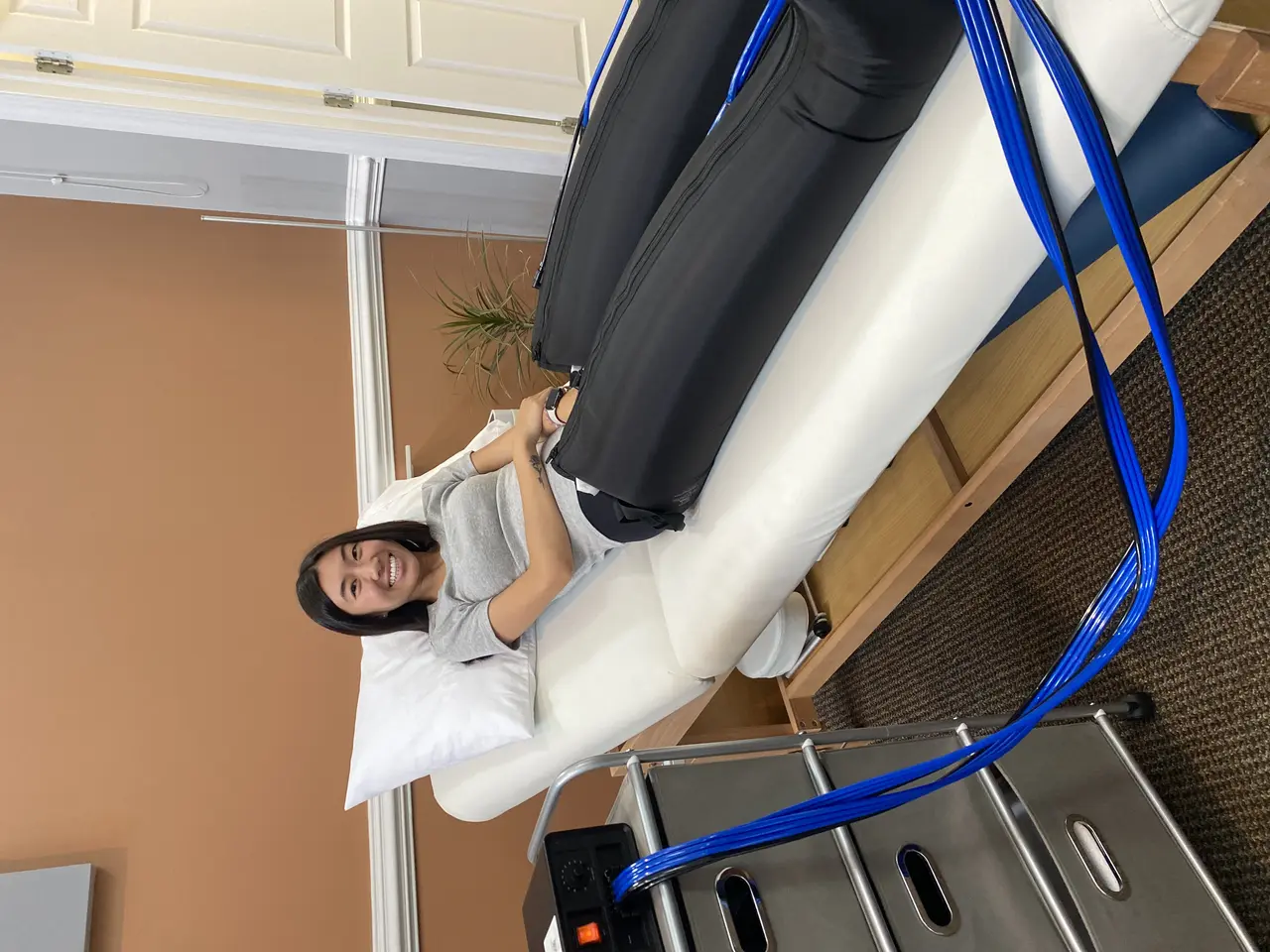Compression therapy has emerged as a valuable technique in managing various types of pain, from post-surgical discomfort to chronic conditions. By applying controlled pressure to specific body areas, this therapy aims to enhance circulation, reduce swelling, and alleviate pain. In this blog, we will delve into the intricacies of compression therapy, exploring its mechanisms, benefits, and practical applications in pain reduction.
Understanding Compression Therapy
Compression therapy involves the use of elastic garments or devices to apply pressure to specific areas of the body. This section will explore the fundamentals of compression therapy, how it works, and the different types available, including stockings, wraps, and pneumatic devices.
The effectiveness of compression therapy lies in its ability to create a controlled and consistent pressure gradient. This gradient is vital for enhancing venous return, which ultimately supports the cardiovascular system. By understanding the mechanics behind this therapy, we can appreciate its role in pain management more deeply.
Various types of compression garments cater to different therapeutic needs. From compression stockings designed to alleviate swelling in legs to wraps used in sports medicine for injuries, each option has unique applications. This variety allows compression therapy to address a wide spectrum of conditions effectively.
Furthermore, a key aspect of compression therapy is its non-invasive nature, making it an appealing choice for many patients. Unlike surgical interventions, compression therapy offers a way to manage pain and promote healing without extensive recovery time, which is crucial for individuals with busy lifestyles.
How Compression Therapy Aids in Pain Reduction
The primary mechanism by which compression therapy alleviates pain is through improved blood flow and decreased swelling. This section discusses the physiological effects of compression on tissues and its impact on pain pathways, including its role in reducing muscle soreness and enhancing recovery.
By enhancing circulation, compression therapy helps to deliver essential nutrients and oxygen to tissues. This increased blood flow can alleviate pain associated with poor circulation, as it allows for quicker removal of metabolic waste products that accumulate during physical exertion.
Additionally, the application of uniform pressure promotes lymphatic drainage, which reduces edema—a common contributor to persistent pain. This is particularly relevant for individuals suffering from conditions such as lymphedema, where fluid buildup is prevalent and can cause significant discomfort.
Incorporating evidence from clinical studies, we see that patients using compression therapy report lower pain scores and faster recovery times compared to those who do not. This indicates that consistent use of compression can effectively support pain reduction strategies in both acute and chronic settings.
Conditions Treated with Compression Therapy
Compression therapy can be beneficial for various conditions, including chronic venous insufficiency, lymphedema, and sports injuries. This section outlines specific ailments that can be managed with compression therapy, offering insights into how it can facilitate pain reduction in these scenarios.
For individuals with chronic venous insufficiency, compression therapy aids in preventing the progression of the disease by improving venous return. This intervention significantly reduces leg pain and heaviness, enhancing the overall quality of life for those affected.
Lymphedema presents unique challenges, but with the use of graduated compression garments, patients can manage swelling effectively. This section will also explore how the use of compression wraps can facilitate better outcomes in treating this chronic condition, allowing patients to lead more active lives.
Sports injuries such as strains and sprains benefit greatly from compression therapy. By applying pressure to the injured area, the therapy reduces inflammation and pain while speeding up the recovery process, enabling athletes to return to their activities more quickly.
In summary, the versatility of compression therapy makes it an invaluable tool in treating a diverse array of pain conditions. From preventing postoperative complications to managing chronic conditions, its role in pain reduction is ever-expanding.
The Role of Compression Therapy in Rehabilitation
For individuals recovering from surgery or injury, compression therapy can play a crucial role in the rehabilitation process. This section explores how clinicians incorporate compression techniques into treatment plans to expedite recovery and manage pain effectively.
During the rehabilitation process, applying compression can limit swelling around an affected joint, thereby reducing pain and discomfort. This is particularly important following orthopedic surgeries, where managing post-operative swelling is critical to achieving successful outcomes.
Interestingly, rehabilitation protocols that integrate compression therapy consistently show improved functional outcomes. Patients often regain mobility more quickly, which is essential for maintaining physical health and preventing secondary complications related to immobility.
Moreover, psychological aspects of recovery cannot be underestimated. The assurance that compression therapy offers in terms of improved recovery and pain management can positively influence a patient’s morale and motivation throughout the rehabilitation journey.
Home Use of Compression Therapy
With the growing popularity of at-home treatments, this section discusses the availability and use of compression garments for self-care. It provides guidance on selecting the right products and best practices for incorporating compression therapy into daily routines for pain management.
As many patients seek to manage their pain independently, the market for home-use compression products has expanded significantly. Various options, ranging from compression socks to arm sleeves, are now readily available to cater to individual needs. However, selecting the right product is essential for maximizing the benefits of compression therapy.
It’s important for users to understand how to measure their limbs accurately to ensure a proper fit, as this directly affects the efficacy of the therapy. Additionally, users should be aware of the pressure levels of different garments, as not all conditions require the same degree of compression.
Incorporating compression therapy into daily routines can be straightforward. Whether worn during exercise or throughout the day, garments should feel comfortable yet snug. This section will help readers establish a structured approach to using compression as part of their pain management toolkit.
Ultimately, the move towards home care signifies a shift in how compression therapy is integrated into holistic pain management strategies. As more individuals discover its benefits, compliance with use will likely improve overall outcomes in pain reduction.
The Impact of Compression Therapy on Pain Management
In conclusion, compression therapy plays a significant role in pain reduction by promoting circulation and reducing inflammation. Its diverse applications make it an essential tool for both healthcare professionals and individuals seeking relief from various pain conditions. As research advances, this therapy continues to demonstrate promising results, providing a non-invasive option for those in need.



